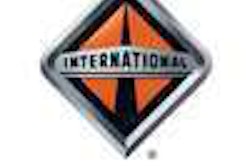Hundreds of trucks sit on both sides of the border, clustered along key transit corridors. Drayage trucks trickle back and forth with trailers for relays to other trucks or drops at vast warehouses.
It’s an inefficient and costly distribution system. Unfettered point-to-point transportation would be ideal, but minimum standards for commercial vehicles on one side of the border are unacceptable on the other side. Some in the U.S. government want to change the situation, but political gridlock largely blocks progress. And while truck transportation is restricted, it’s universally understood that individuals can come and go across the border at will, often staying on the other side for the rest of their lives.
Think this is Mexico? Think again. Welcome to the border between California and the rest of the United States just a few years from now.
California has long been a renegade on environmental issues. For many years, the California Air Resources Board (CARB) has mandated its own diesel fuel formulation that until recently consistently made California diesel the most expensive in the country. But that was peanuts. Already in place is a five-minute limit on engine idling – even for a driver’s federally mandated rest in the sleeper – unless it’s a current-technology engine that has been “Clean Idle” certified.
And much more is in the works. Barring unexpected last-minute legal action, a phaseout of older trucks serving the ports of Long Beach and Los Angeles begins this month. Meanwhile, statewide restrictions on the age of truck engines operating at port and intermodal rail facilities kick in at the end of 2009. CARB also has adopted regulations that mandate emissions reductions for truck and trailer reefer units operating in the state, although California can enforce the rules only if the Environmental Protection Agency grants it a waiver under the Clean Air Act.
Perhaps the most far-reaching regulations are two that CARB currently plans to consider at a board hearing in December. One would require that new highway tractors and 53-foot trailers meet SmartWay certification standards by 2011 and that older tractors and trailers be retrofit to SmartWay standards by 2014. The other – commonly known as the private fleet rule – would require the retrofit of pre-2007 trucks by 2014. By 2022, all trucks would have to meet 2010 emissions standards.
All of these regulations apply or would apply to trucks operating in California regardless of where they are based. Everyone presumes that despite the added expense, long-haul trucking companies will continue to operate in California, which represents 12 percent of the nation’s population and is home to some of the nation’s largest ports. Perhaps that’s true. Certainly, it’s unrealistic to expect a wholesale change in the existing distribution network in California overnight or a border drayage arrangement on the scale of the one at the Mexican border.
And yet, trucking companies increasingly may decide to stay out of California and instead work with California-based carriers that would connect with them at points in Arizona, Nevada or Oregon. Highly regulated California carriers would operate expensive equipment and would charge a bundle, of course. But for many carriers, this system still might be more cost-effective than investing in new trucks or trying to ensure that they have the right trucks and trailers in the right places.
The real danger, however, is not that California will isolate itself from the rest of the country. Rather, CARB could replace EPA as the de facto environmental regulator on truck-related issues. It’s already happening with idling. And just last month, EPA said it had granted California a waiver so the state could impose its engine onboard diagnostics requirements for 2010 and later model year heavy-duty vehicles. This despite the fact that EPA has been working on its own onboard diagnostics regulations, which it hasn’t finalized.
The bottom line? You can keep your truck out of California, but it’s not clear you can keep California out of your truck.









